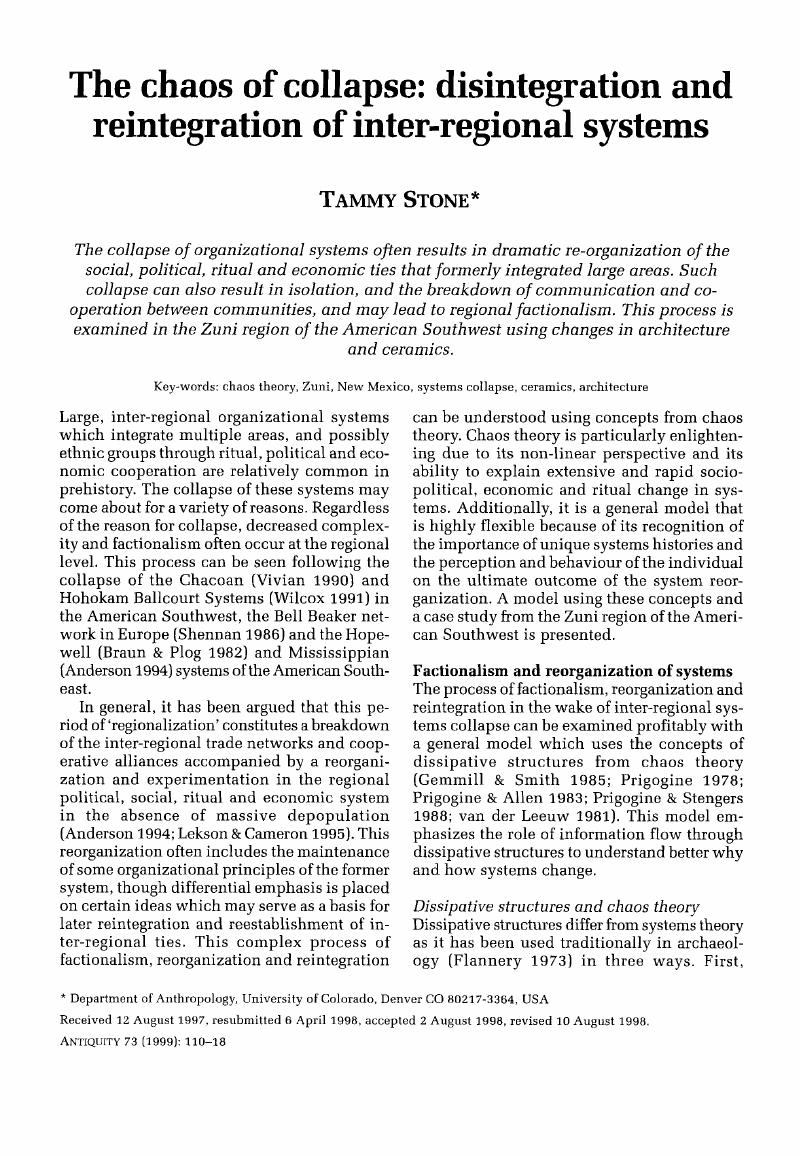Crossref Citations
This article has been cited by the following publications. This list is generated based on data provided by Crossref.
Cameron, Catherine M.
and
Duff, Andrew I.
2008.
History and Process in Village Formation: Context and Contrasts from the Northern Southwest.
American Antiquity,
Vol. 73,
Issue. 1,
p.
29.
Stone, Tammy
2016.
Organizational Variability in Early Aggregated Communities in Middle-Range Societies: An Example from the Kayenta Region of the American Southwest.
American Antiquity,
Vol. 81,
Issue. 1,
p.
58.





